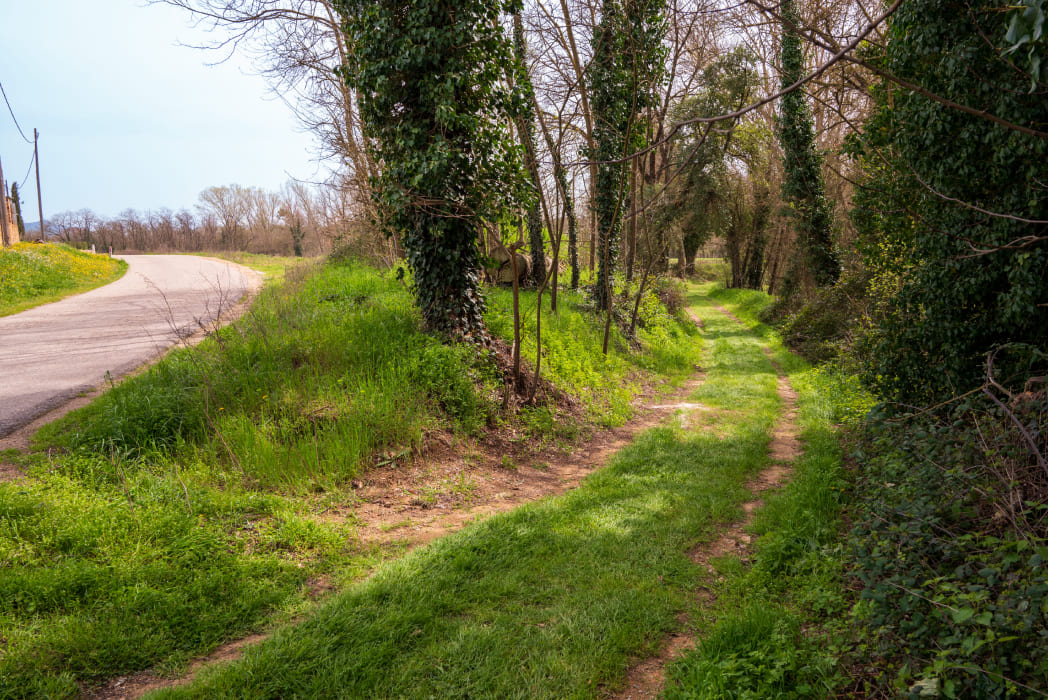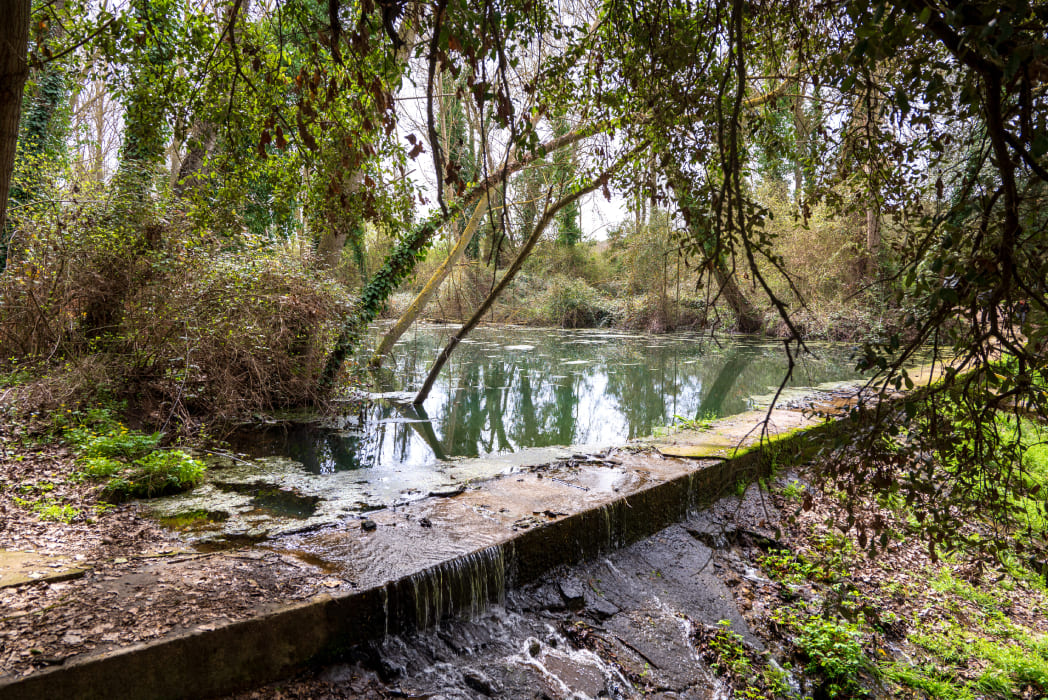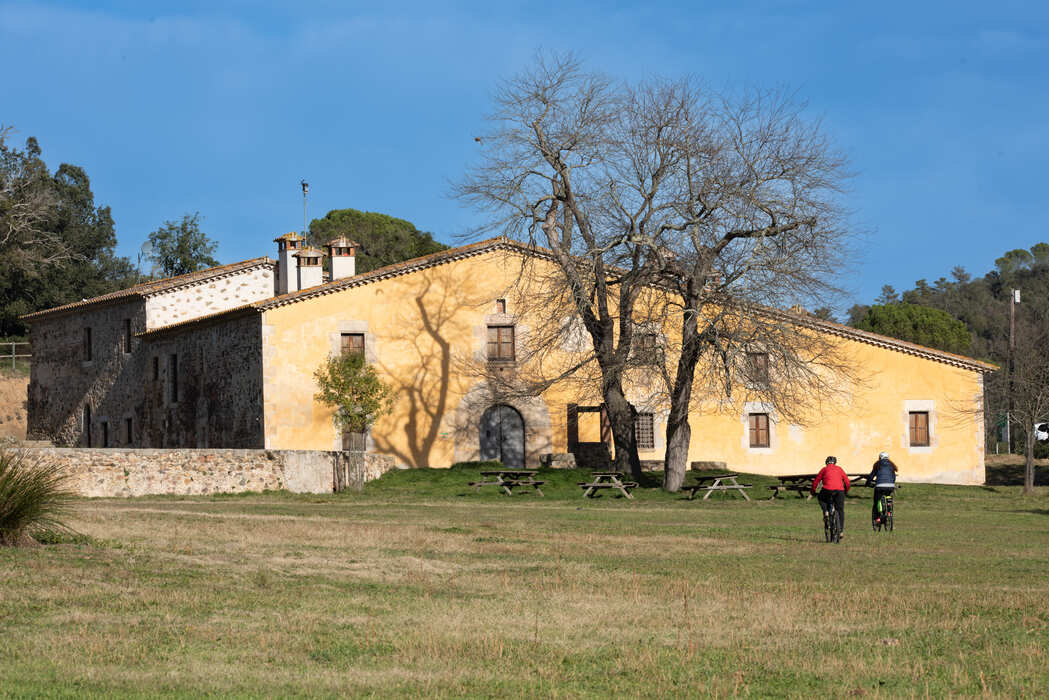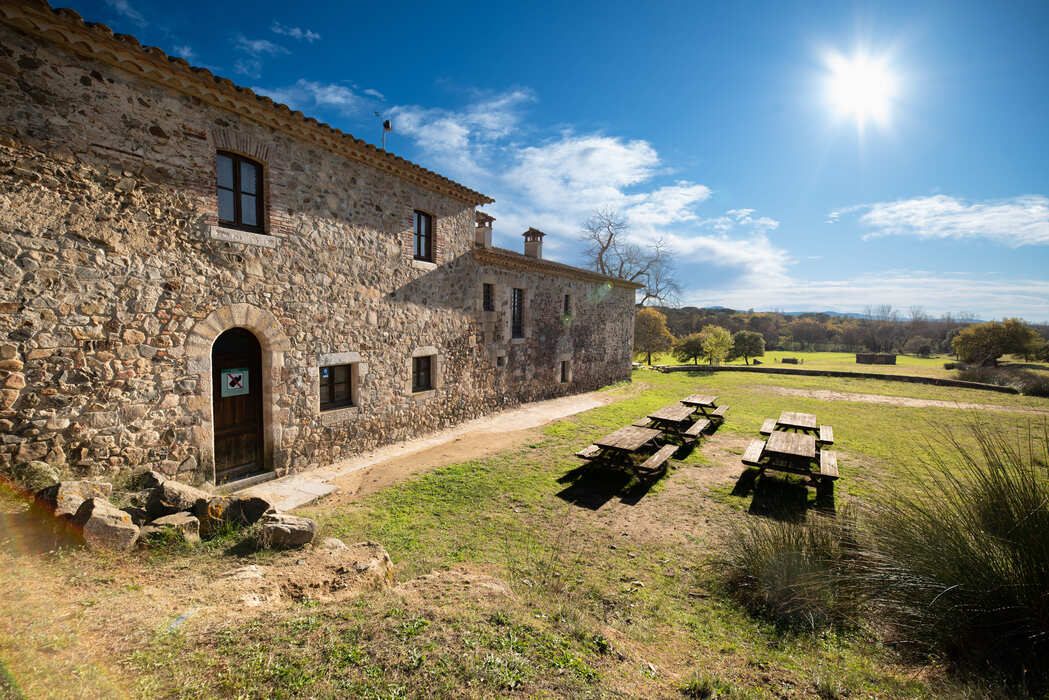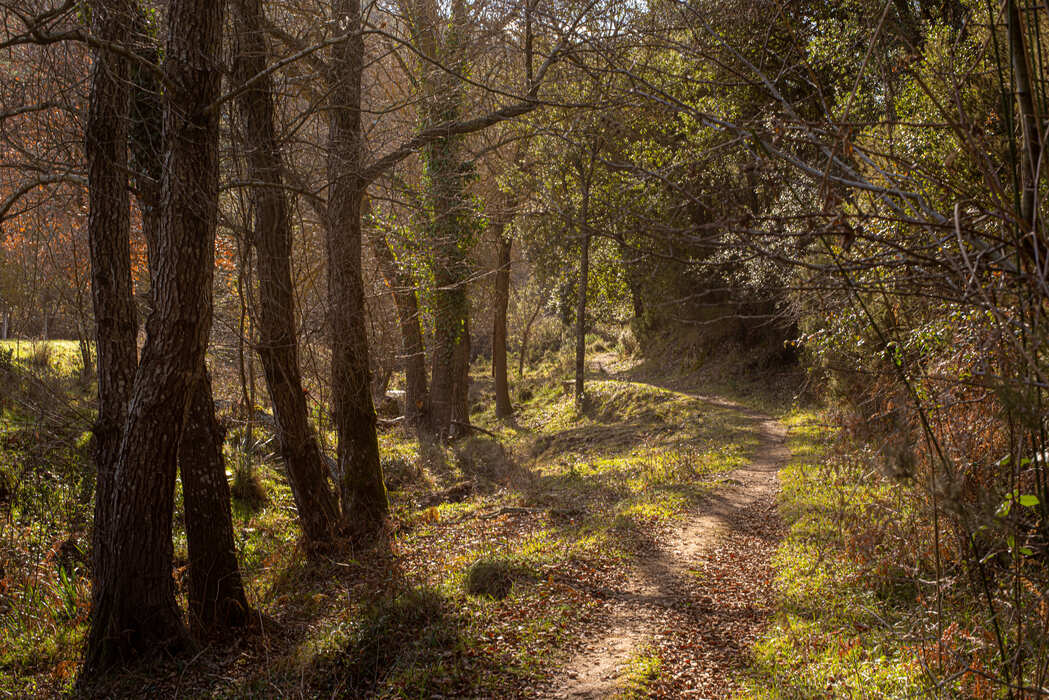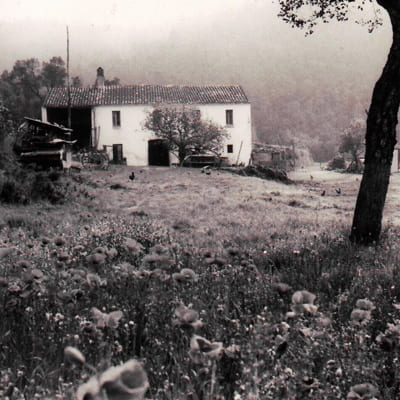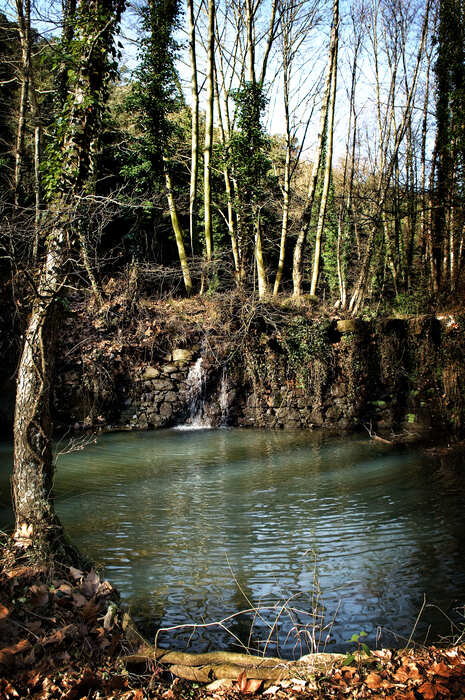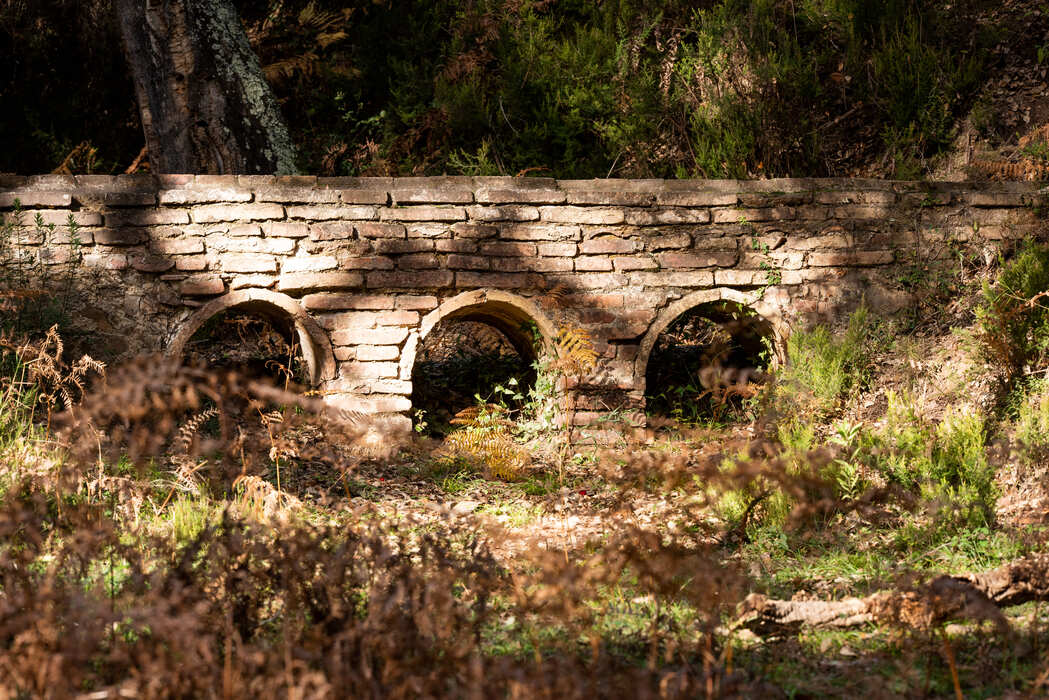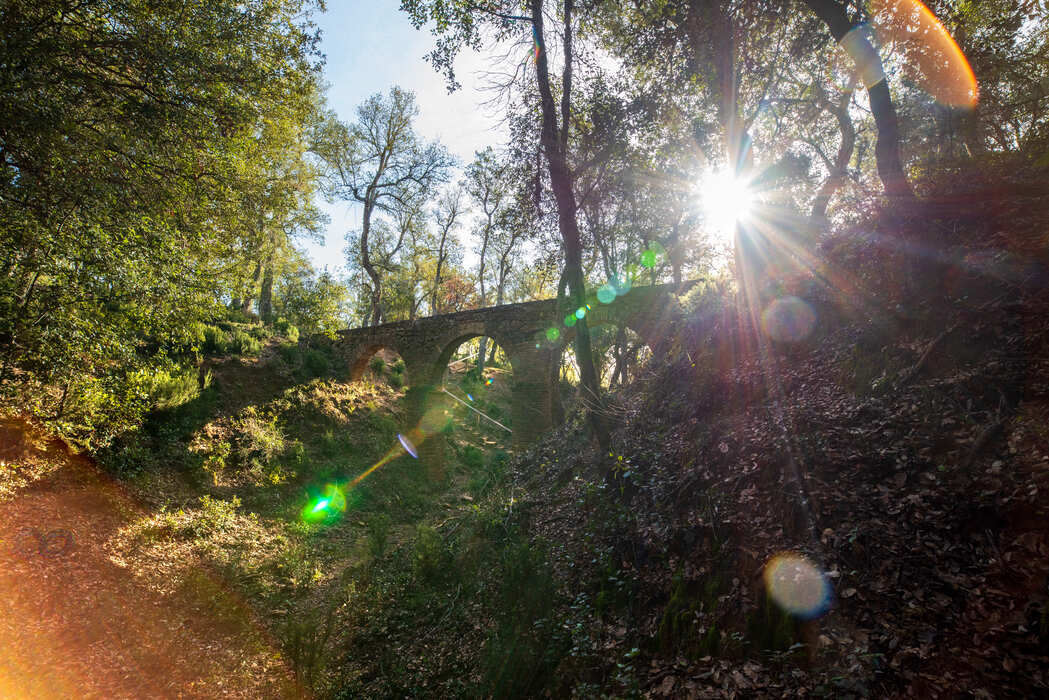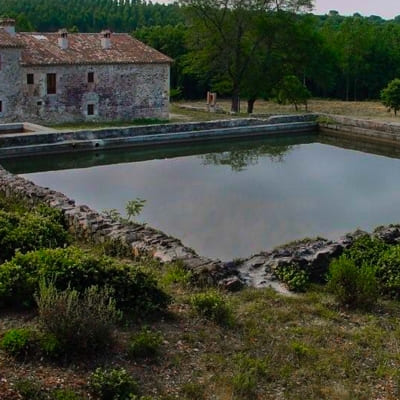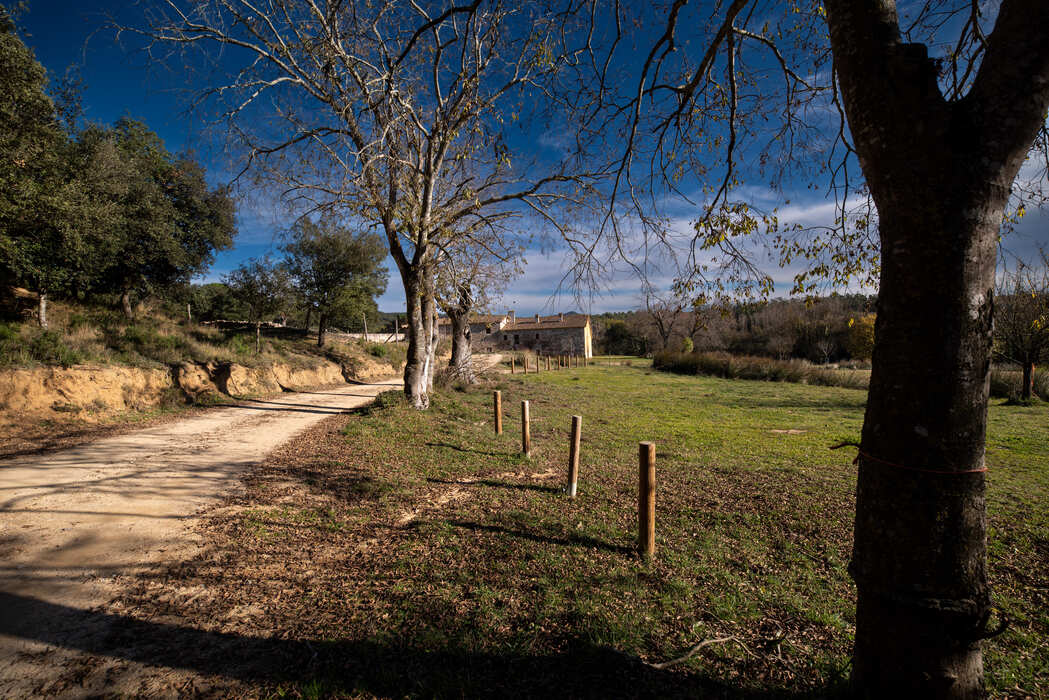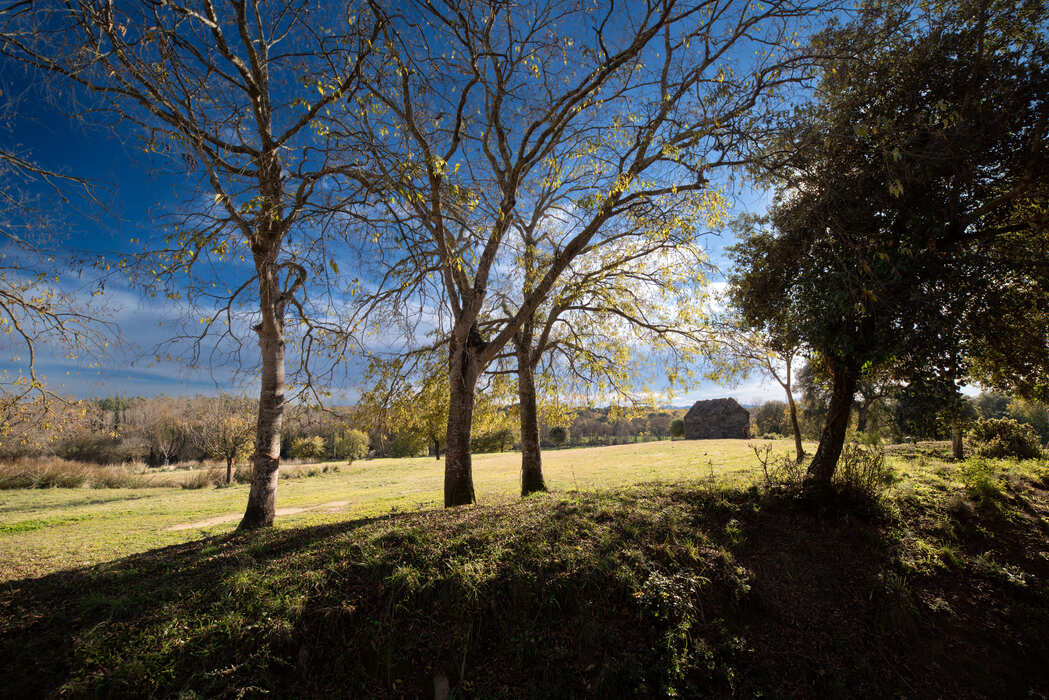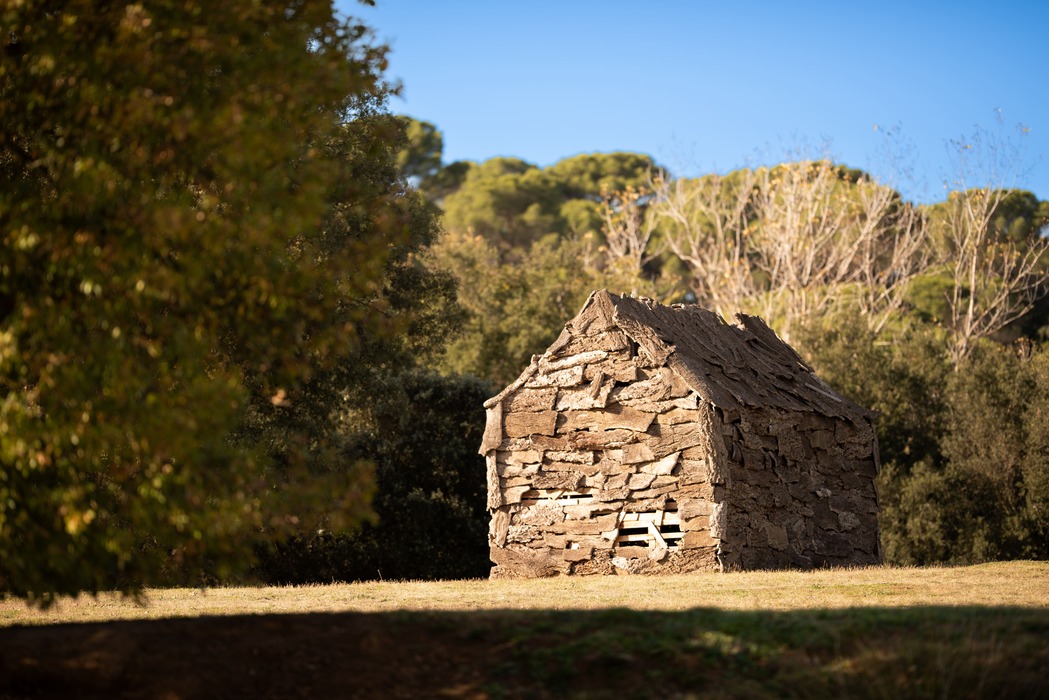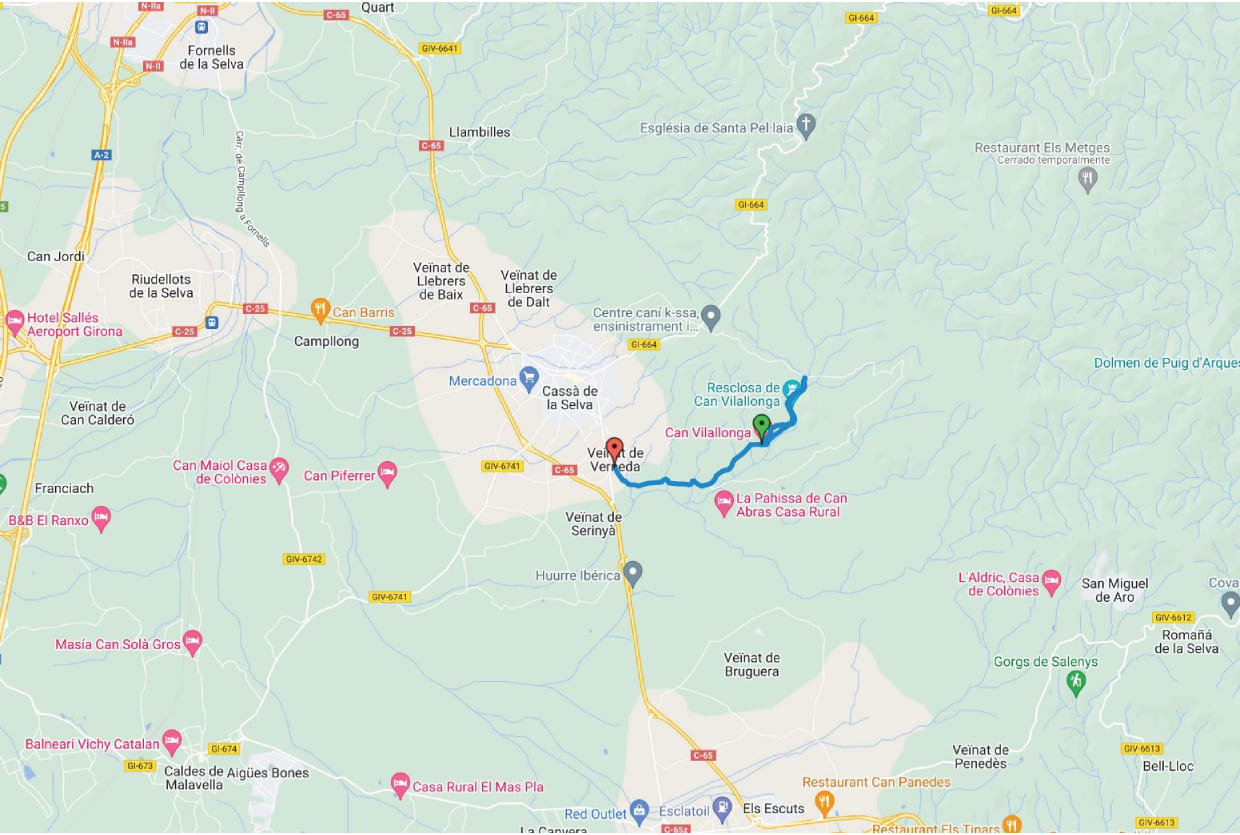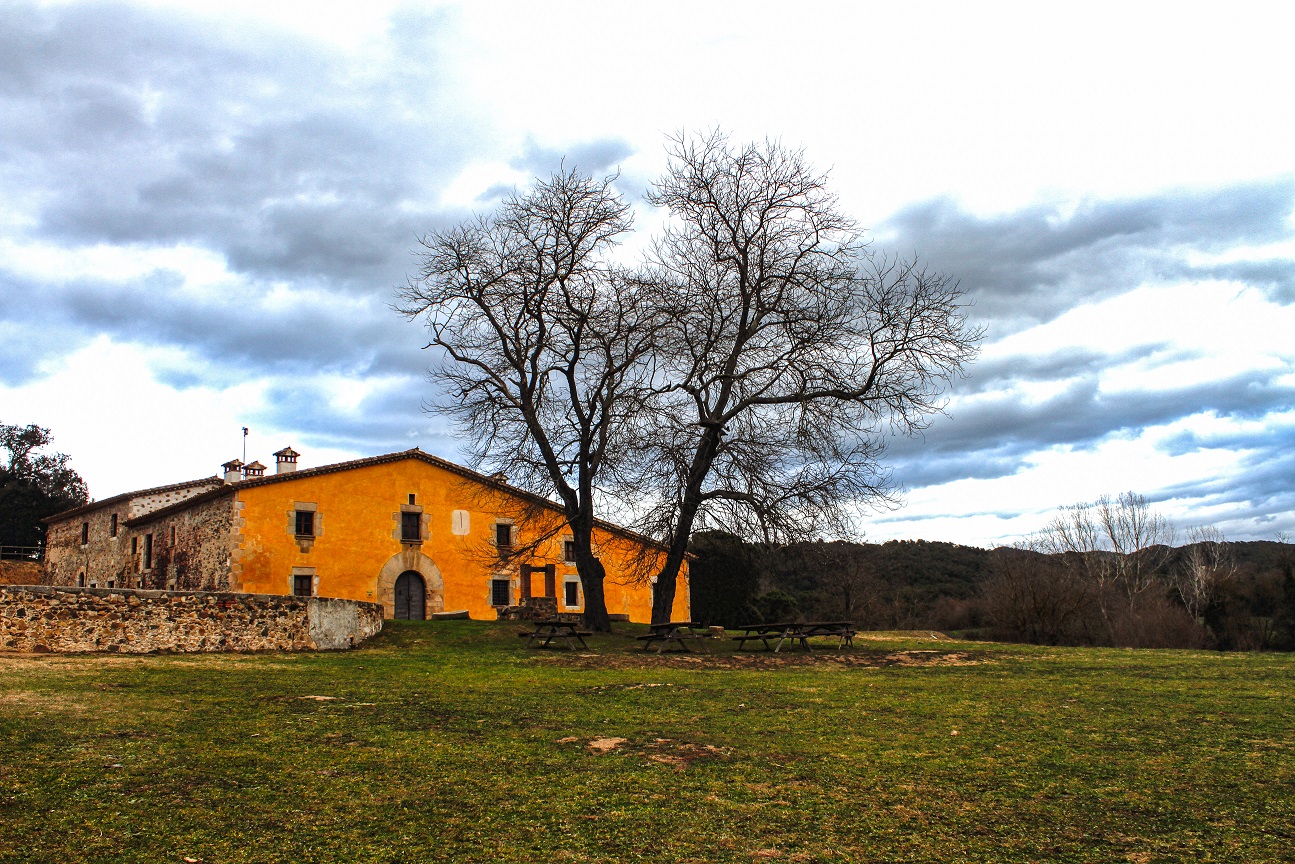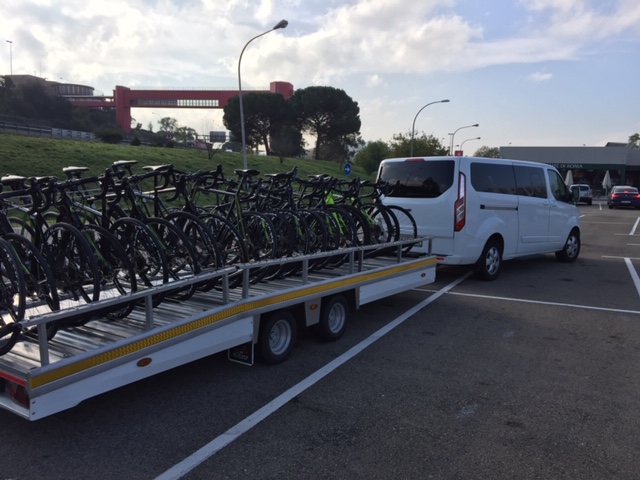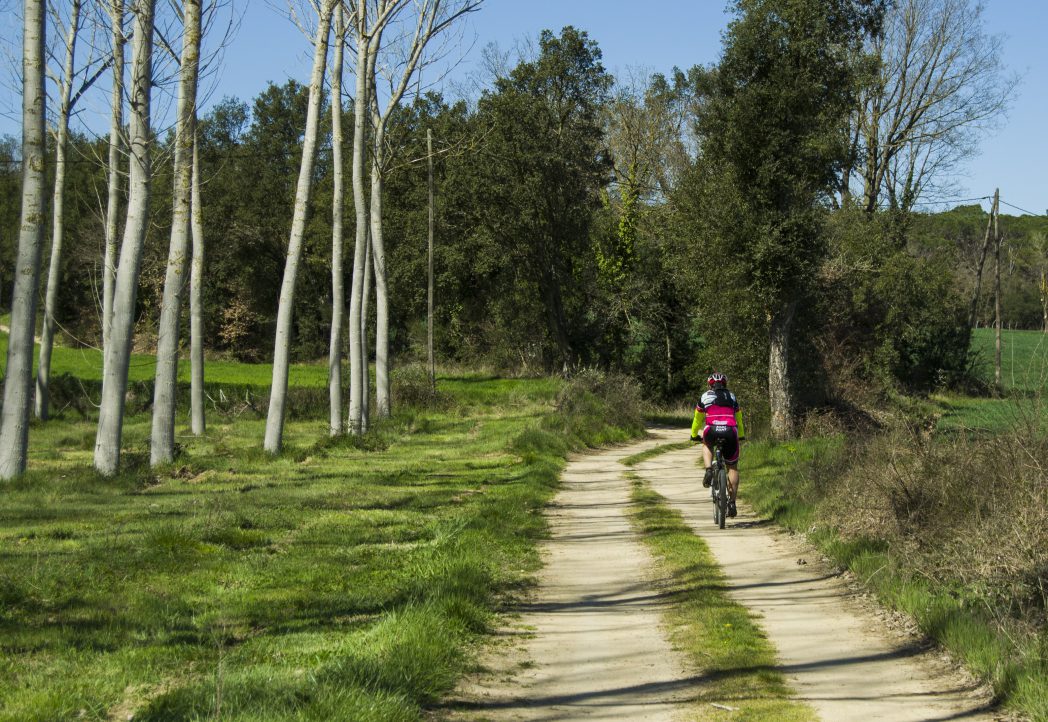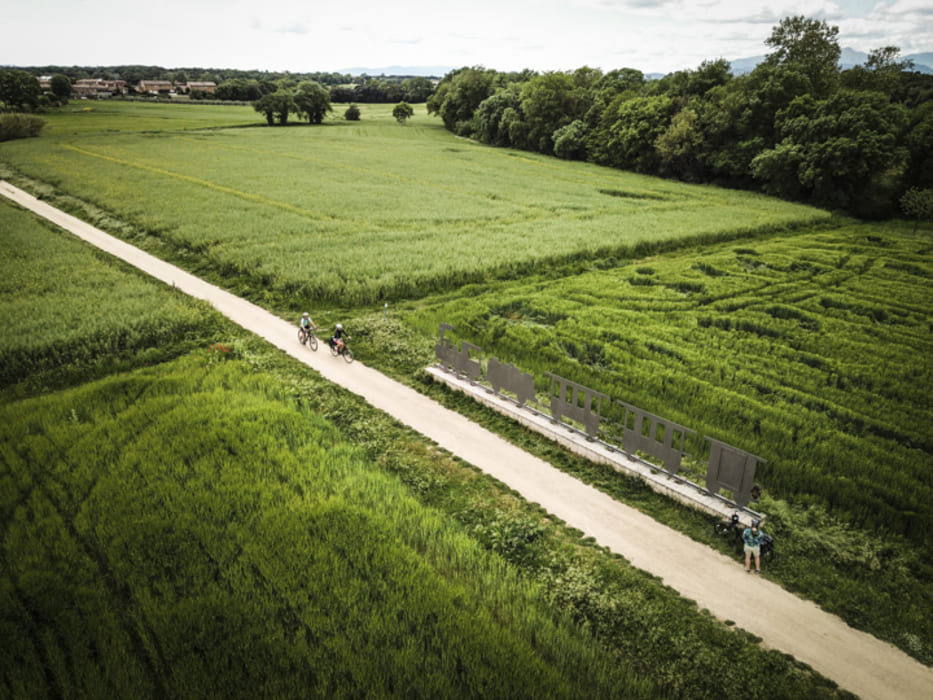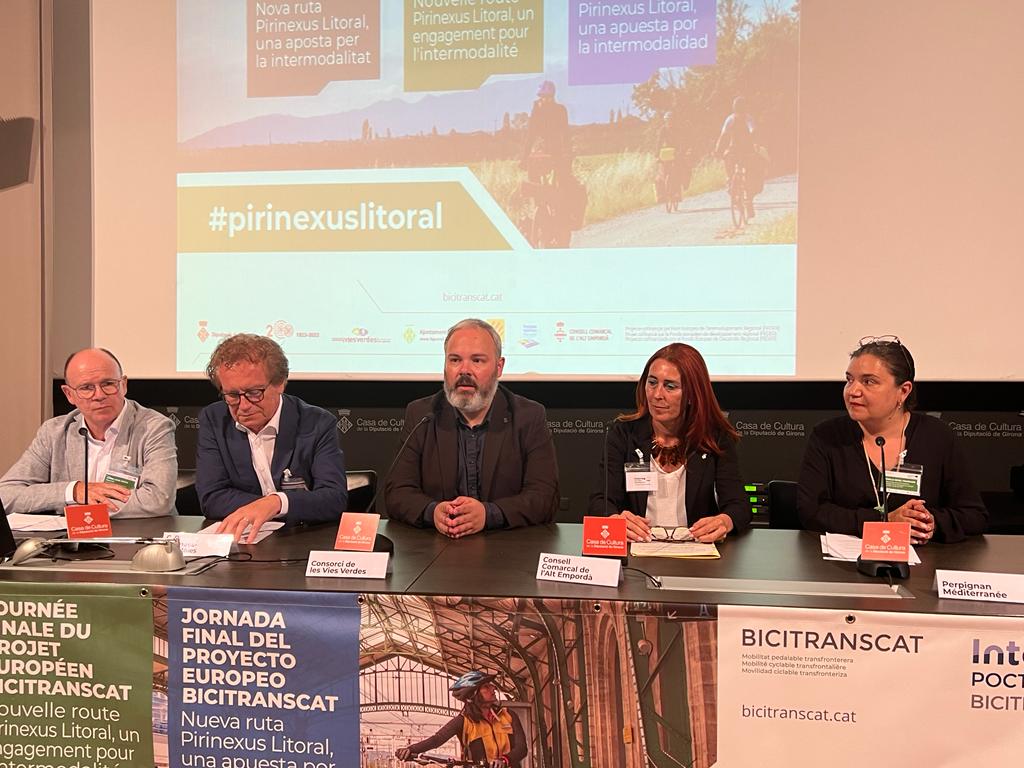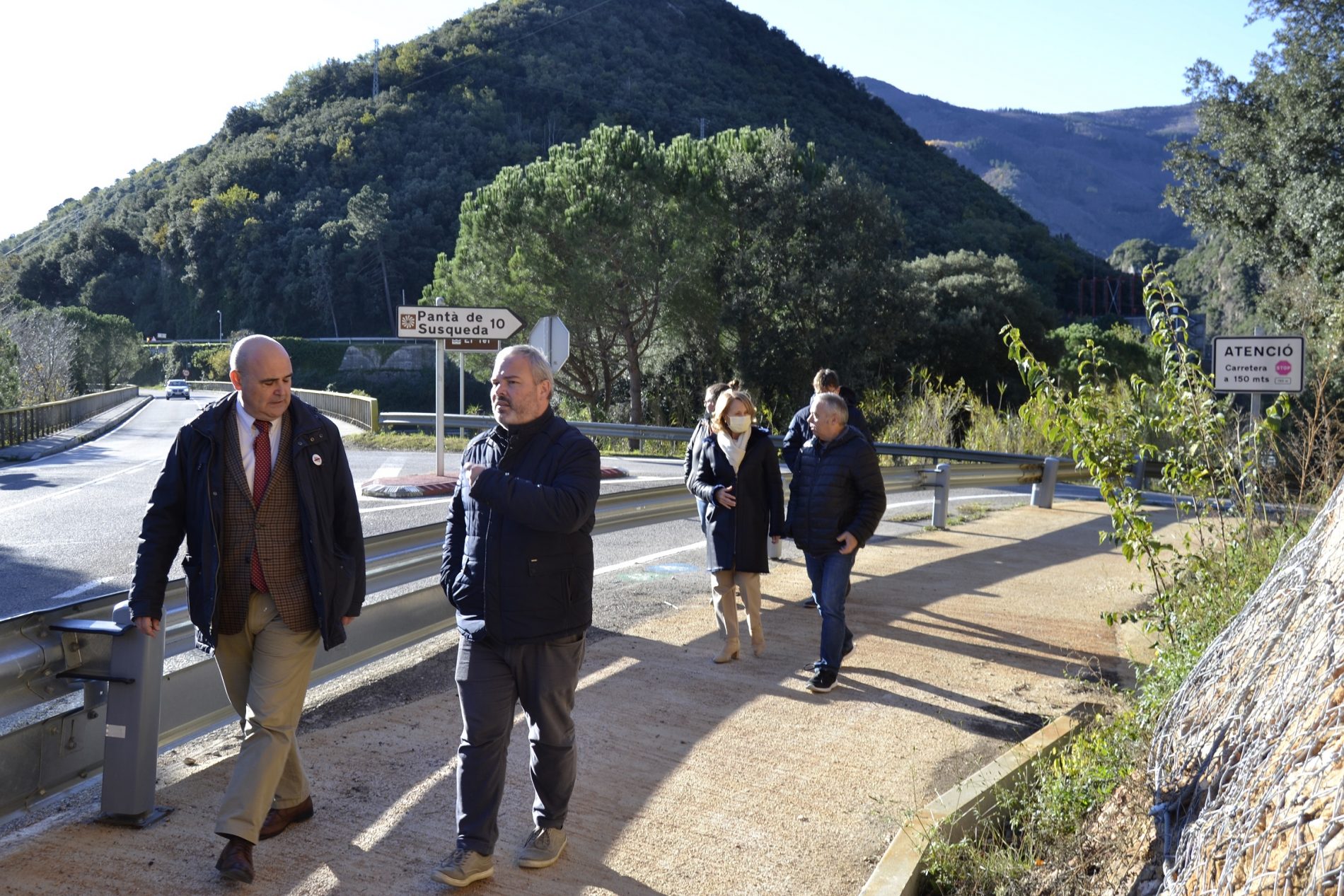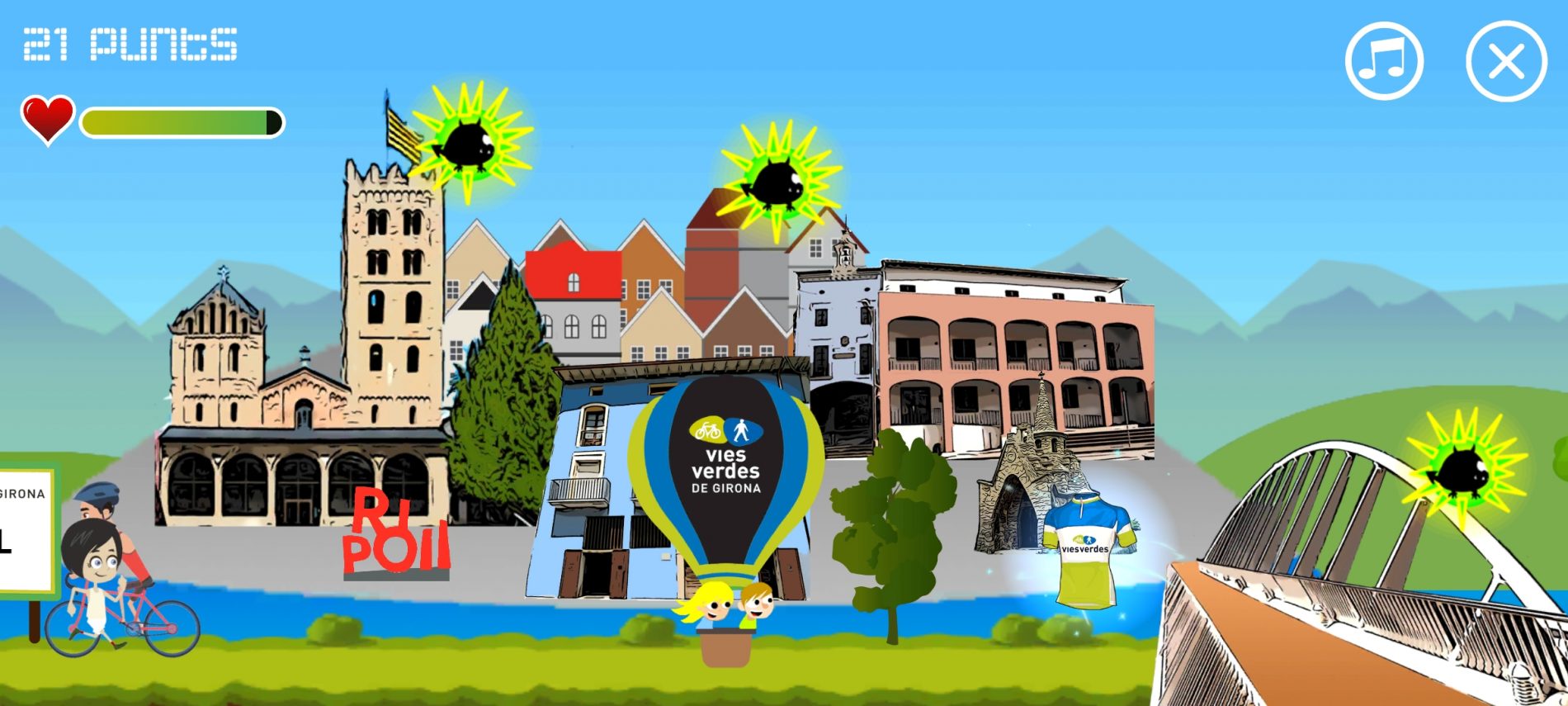The Secret of Cassà de la Selva
This itinerary takes you from Cassà de la Selva to discover the Can Vilallonga public estate and its rich heritage linked to the use of water.
The estate, publicly owned and managed by the Consorci de les Gavarres, is located in a privileged spot at the foot of this massif. It comprises a large farmhouse dating back to medieval times and the land and woods that belonged to it. There is also a large water complex, including an old mill and several dams, reservoirs and in particular a number of aqueducts that transported water to the estate.
To get there, we will cross the cork forests that are characteristic of Les Gavarres massif and that have shaped the economy and society of the land. We can also follow the Vilallonga stream and discover its fauna and flora. When we arrive at Can Vilallonga, we will follow the so-called Water Trail, which will allow us to discover the important role of the management and use of water and all the hidden secrets of the estate.
This itinerary is quite long (5.6 km) but easy to follow, and can be done on foot or by bicycle. In addition, from Can Vilallonga you can follow other routes that go deep into the heart of Les Gavarres.
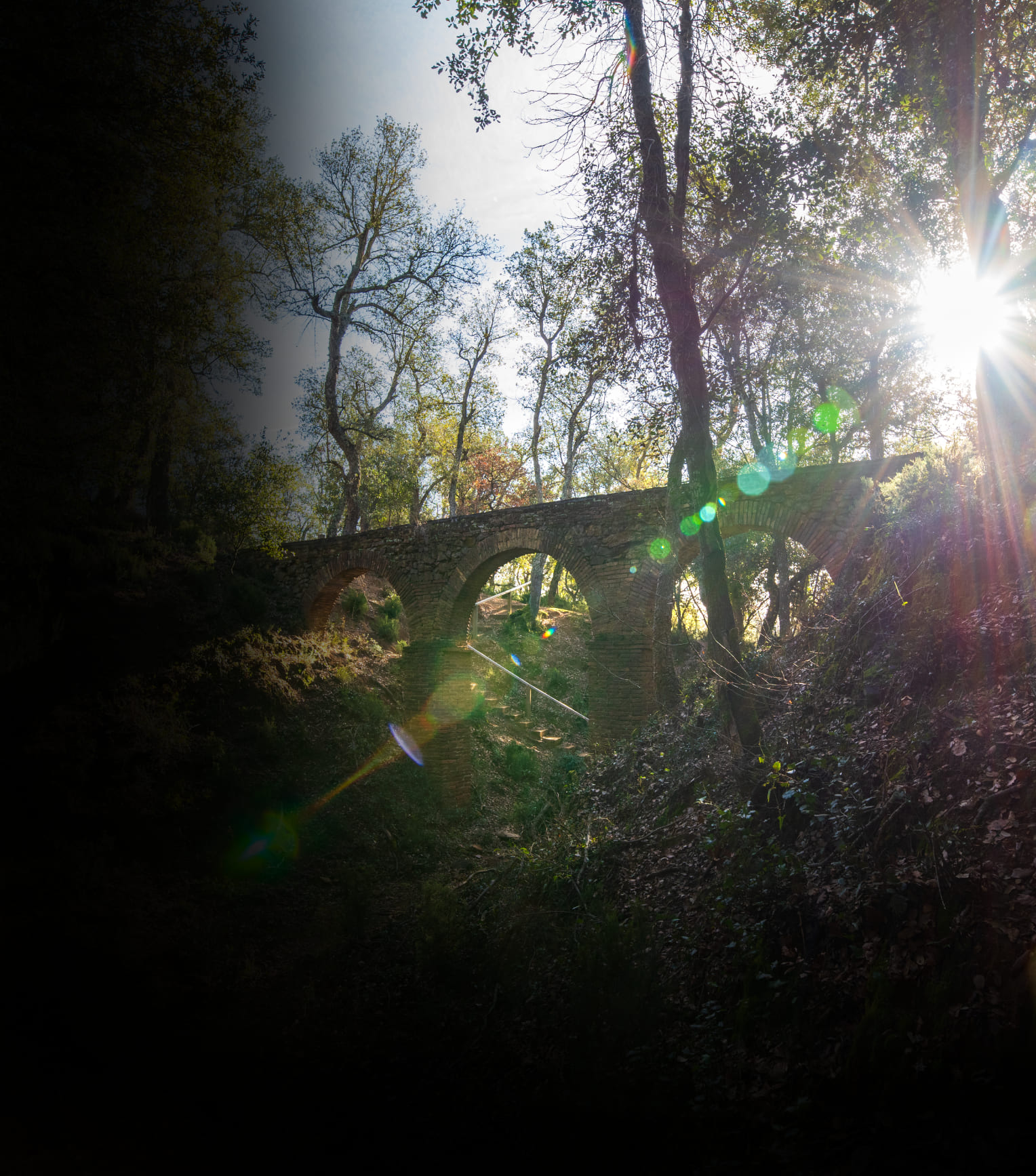
Kilometers 5,6 km (linear route)
Difficulty Average
Pavement Natural route
Maximum altitude 158 m
Minimum altitude 128 m
Services Restaurants, shops, motorhomes, toilets, bicycle repair tools, picnic area
Transport walk or bike
Secret type River paths
Introduction to the municipality
Cassà de la Selva is a town located in a privileged natural setting, between the protected area of Les Gavarres massif and the La Selva plain. Situated at a strategic point south of the Gironès region, Cassà is 14 kilometers from Girona and 20 kilometers from Costa Brava towns like Platja d’Aro.
One of the aspects that have left its mark on the town of Cassà has been the cork production. This has created a unique landscape, a particular culture, and a distinctive way of life. Here you can discover a route that runs from the cork oak forests of Les Gavarres to the cork processing companies. You will also encounter a rich cultural and musical heritage, as well as interesting architecture, the result of the cork industry that has shaped the region.
Finally, the natural environment of Cassà is vibrant and beautiful, characterized by the contrast between the cork and holm oak forests in the protected area of Les Gavarres and the mosaic of cultivated fields on the plain, crossed by numerous streams and a haven for a rich variety of flora and fauna. You can discover all this in a respectful and sustainable way by following the greenways and the numerous routes in the municipality, either on foot or by bicycle.
Points of interest
The old royal road to Sant Feliu: At this point, the royal road that formerly linked Girona to Sant Feliu de Guíxols after leaving the village of Cassà turns off. The path has been restored and reclaimed in recent years, and you can clearly see the depressed structure that centuries of use and the passage of travellers have created in the terrain.
Capçana dam: If you stray some fifty metres from the path and cross the Verneda stream, you will come to the old dam of the Capçana or Limbo mill. This dam stores the water from the stream and creates an area of great natural and scenic interest. In fact, until a few decades ago, the dam was a place where the local people used to relax and rest and where they would come to cool off on summer days.
Can Vilallonga farmhouse: This is a traditional stone-walled farmhouse, originally with a quadrangular floor plan and a tiled gable roof. The beams are made of wood. The main façade has a granite voussoir door and granite windows with moulded ledges. The central window on the first floor has a granite bas-relief on the lintel.
Can Vilallonga stream: This stream collects the waters coming from Les Gavarres and flows into the Verneda stream after leaving the Can Vilallonga estate. Although it is a small, seasonal stream, its water was channelled and used to meet the needs of the estate as well as to power the mill that was used to grind grain and make flour and fodder. The stream also creates a very interesting ecosystem of its own, with abundant amphibians, and provides a very pleasant walk.
Can Vilallonga mill: The mill was originally part of the same property as the farmhouse and received water from the Vilallonga stream thanks to the dam located a few metres upstream. The flour mills were used to grind quality cereals to make flour for human consumption but also to grind other types of grains to make fodder and feed for livestock. We have no information about what the old mill looked like, how many millstones it operated, whether it served only Can Vilallonga, or if other farmers also went there to grind grain. Today the old mill has been renovated and is used for residential purposes.
Mill dam: The mill needs several structures to ensure the hydraulic energy to move its millstones. The first is the dam built in the middle of the Can Vilallonga stream. This was used to stop and store the water and to divert it to an old canal, now lost, which transported it to the Can Vilallonga mill pond.
Aqueducts: On the Can Vilallonga estate, there are three aqueducts built in the modern period that lead the water collected at Dues Rieres to the Can Vilallonga pond.
The first aqueduct we come across, with three “eyes”, three small semicircular arches, is small and built of tile and mortar. Further on we find the large 18-metre aqueduct that bridges the 5 m height difference caused by a watercourse. Due to its scale, stone and lime masonry was used to construct the walls and pillars, and tiles were used for the channelling and arranged on their ends in the arches. Finally, the two-arch aqueduct is 13 metres long and spans a difference in height of almost 3 metres. The aqueducts, which form part of the Ethnological Interest Zone of the Can Vilallonga water complex, and the buried canal are functional thanks to the restoration and maintenance work carried out by the Consorci de les Gavarres.
Irrigation pond: The destination and storage point for the water collected in the Dues Rieres and transported by means of the aqueducts. Water was used to irrigate the orchard and fields closest to the house. For this reason, there is a small house on the southwestern side of the pond that has stairs leading to the lower part where there is a stopcock. When this valve was opened, the outgoing water was channelled through a buried ceramic pipe to the irrigation system that follows the fields (if you look closely, you can recognise it from the reeds that are growing nearby, indicating humidity). Attached to the pond there is also a small washing area measuring 3 x 3 m where the family who lived in the farmhouse used to wash their clothes.


